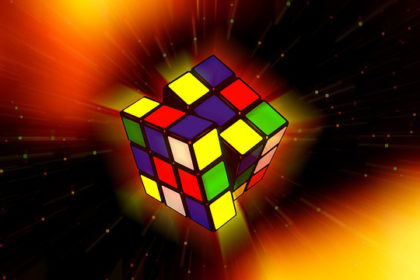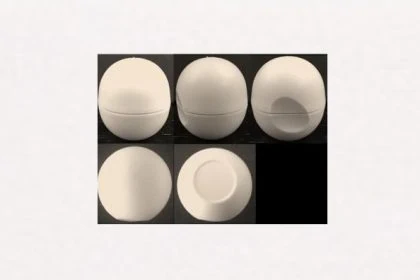The European Court has again rejected the trademark protection as 3D Union trademark for the famous cube shape “Rubik’s Cube” and confirmed the invalidity of it’s trademark registration. The famous cube shape contains a technical solution – even if this is not visible in the trademark representation.
The previous instances
 Since 1999, the famous cube shape Rubik’s Cube has been registered and protected as a three-dimensional union trademark for “three-dimensional puzzles”. In 2006, Simba Toys, a German toy manufacturer, applied to the EUIPO for a declaration of invalidity of the three-dimensional trade mark on the ground that it contained a technical solution which was rotatable and that such a solution could be protected only by a patent and not as a trade mark. Trademark protection can be extended as often as desired – theoretically indefinitely if the corresponding protection fees are paid – but patent protection ends after a maximum of 20 years.
Since 1999, the famous cube shape Rubik’s Cube has been registered and protected as a three-dimensional union trademark for “three-dimensional puzzles”. In 2006, Simba Toys, a German toy manufacturer, applied to the EUIPO for a declaration of invalidity of the three-dimensional trade mark on the ground that it contained a technical solution which was rotatable and that such a solution could be protected only by a patent and not as a trade mark. Trademark protection can be extended as often as desired – theoretically indefinitely if the corresponding protection fees are paid – but patent protection ends after a maximum of 20 years.
In its judgment of 25 November 2014 (T-450/09), the European Court (CJEU) dismissed Simba Toys’ action for annulment on the grounds that the cube form in question did not contain a technical solution which prevented the protection of this form as a trademark. In particular, the Court held that the technical solution characteristic of the Rubik’s Cube was not the result of the characteristics of that shape but, at most, of an invisible mechanism inside the cube.
In the judgement of 2016 (C-30/15 P), the European Court of Justice (ECJ) annulled the trademark protection for the Rubik’s Cube and referred the case back to the EUIPO for re-evaluation. Yesterday, the case was again referred to the Court of Justice of European Union (CJEU).
Form of trademark necessary for technical effect?
The European Court of Justice (ECJ) had regarded as essential and still missing examination whether the form of the dispute mark is necessary to achieve a technical effect. Therefore, the European Court (CJEU) first clarified in its judgment yesterday that a form that is “necessary” to achieve the intended technical result does not have to be the only form that can achieve that result.
Nevertheless, Article 7(1)(e)(ii) of Regulation No 40/94 requires that all the essential characteristics of a trade mark be identified by the Office. Moreover, that article cannot apply where the application for registration as a trade mark relates to a shape of goods in which a non-functional element, such as a decorative or imaginative element, plays an important role, the CJEU held.
Colouring not an essential feature of the Rubric’s Cube
An important point before the Court was therefore whether the differences in colours on the six sides of the cube constituted an essential characteristic of the contested mark. EUIPO and also the Board of Appeal had assessed the colouring as an essential characteristic. If the surface of the cube were not covered with different colours or symbols, the product would not function as a puzzle.
However, the colours were not mentioned either in the description or in the graphic representation of the mark. Only two types of hatching, vertical and diagonal, are visible in the graphic representation of the mark Rubrik’s Cube. This would in no way suggest different colours, the CJEU ruled. The colours of the magic cube are therefore not essential characteristics of the mark.
Essential features of the Rubric’s Cube
The Board of Appeal had identified two essential characteristics for the technical result: the overall shape of the cube, on the one hand, and the black lines and small squares on each side of the cube, on the other. This was yesterday confirmed by the Court.
The CJEU rejected the applicant’s argument that there were alternative geometric shapes capable of achieving the same intended technical result as that of the goods concerned. Although a three-dimensional puzzle which can be rotated may appear in shapes other than those of a cube, it is irrelevant to the examination of the functionality of the essential characteristics of a shape whether there are other shapes or not which can achieve the same technical result, the yesterday the Court explained.
Non-visible elements in the graphic representation may be relevant
The absolute ground for refusal laid down in Article 7(1)(e)(ii) of Regulation No 40/94 may apply to signs consisting of the shape of goods the graphic representation of which does not contain all the elements necessary for the technical solution in question to be implemented. However, that requires proof that the implementation of that technical solution cannot be effective without the essential characteristics visible in that graphic representation.
According to CJEU, it follows that the fact that the rotatability of the vertical and horizontal grilles of the ‘Rubik’s Cube’ is due to an in-cube mechanism (an element not visible in the graphic representation of the contested mark) must be taken into account when analysing the functionality of the essential characteristics of that mark. The Board of Appeal rightly took that into account in its decision of 19 June 2017 (‘the contested decision’) and found that the registration of the Rubik’s Cube cube shape as a trade mark infringed Article 7(1)(e)(ii) of Regulation No 40/94.
The CJEU therefore upheld the contested decision of the Board of Appeal and the invalidity of the trade mark registration of the cube shape Rubik’s Cube as a three-dimensional Union trade mark.
Would you also like to protect your trademark or brand?
Our lawyers are experienced in trademark and patent law, national and international law.

Sources:
Judgement of CJEU “Rubik’s Cube”, EU:T:2019:765
Image:







Leave a Reply